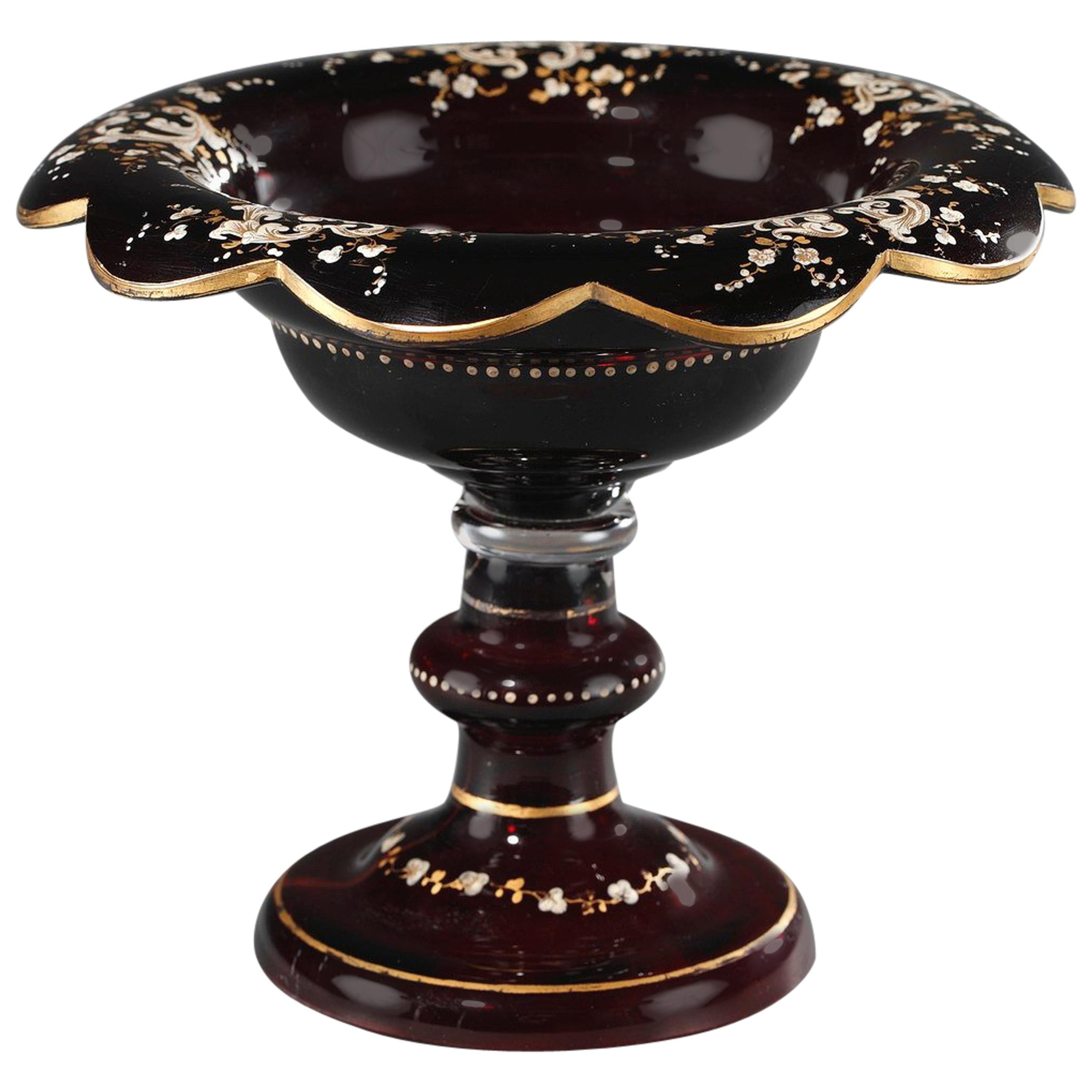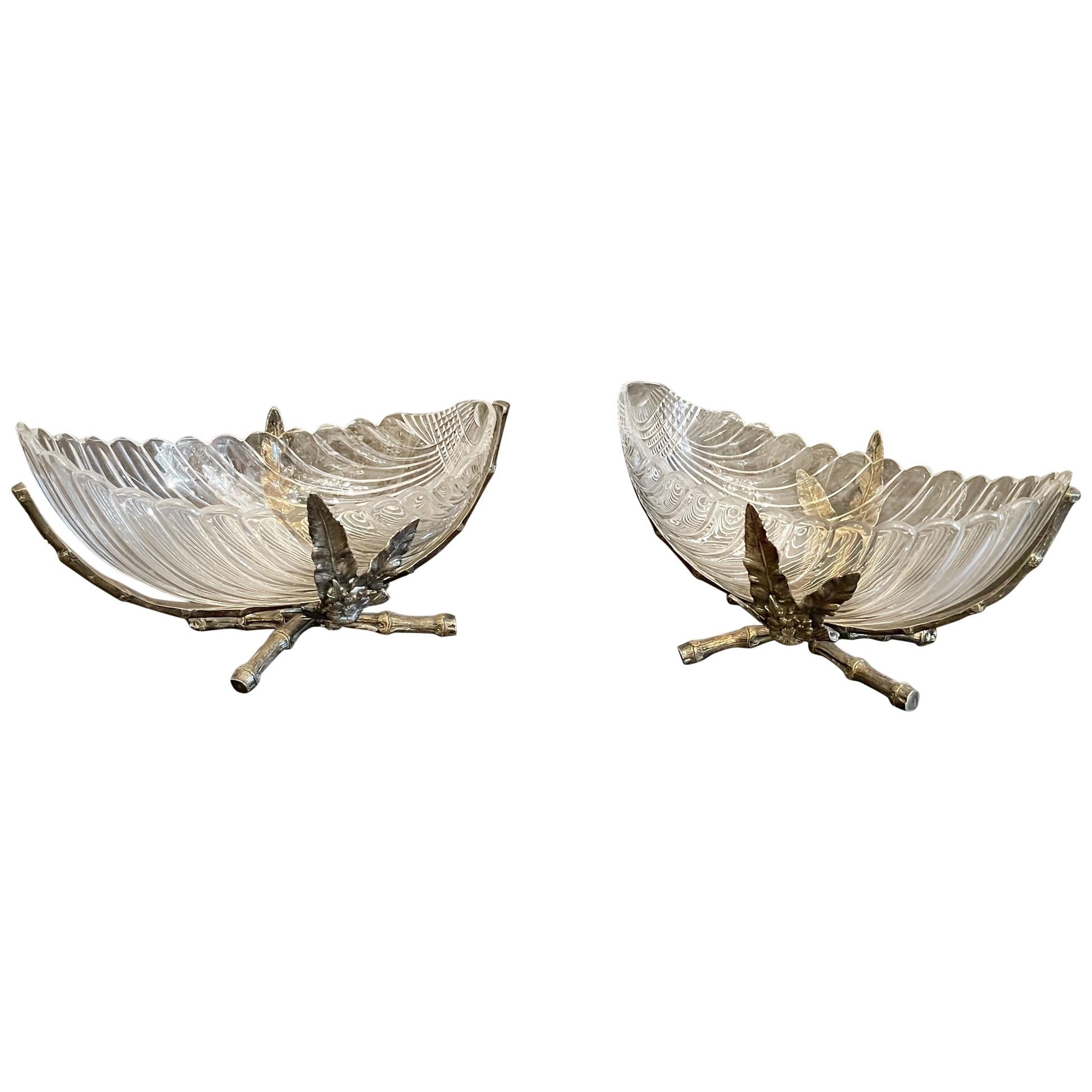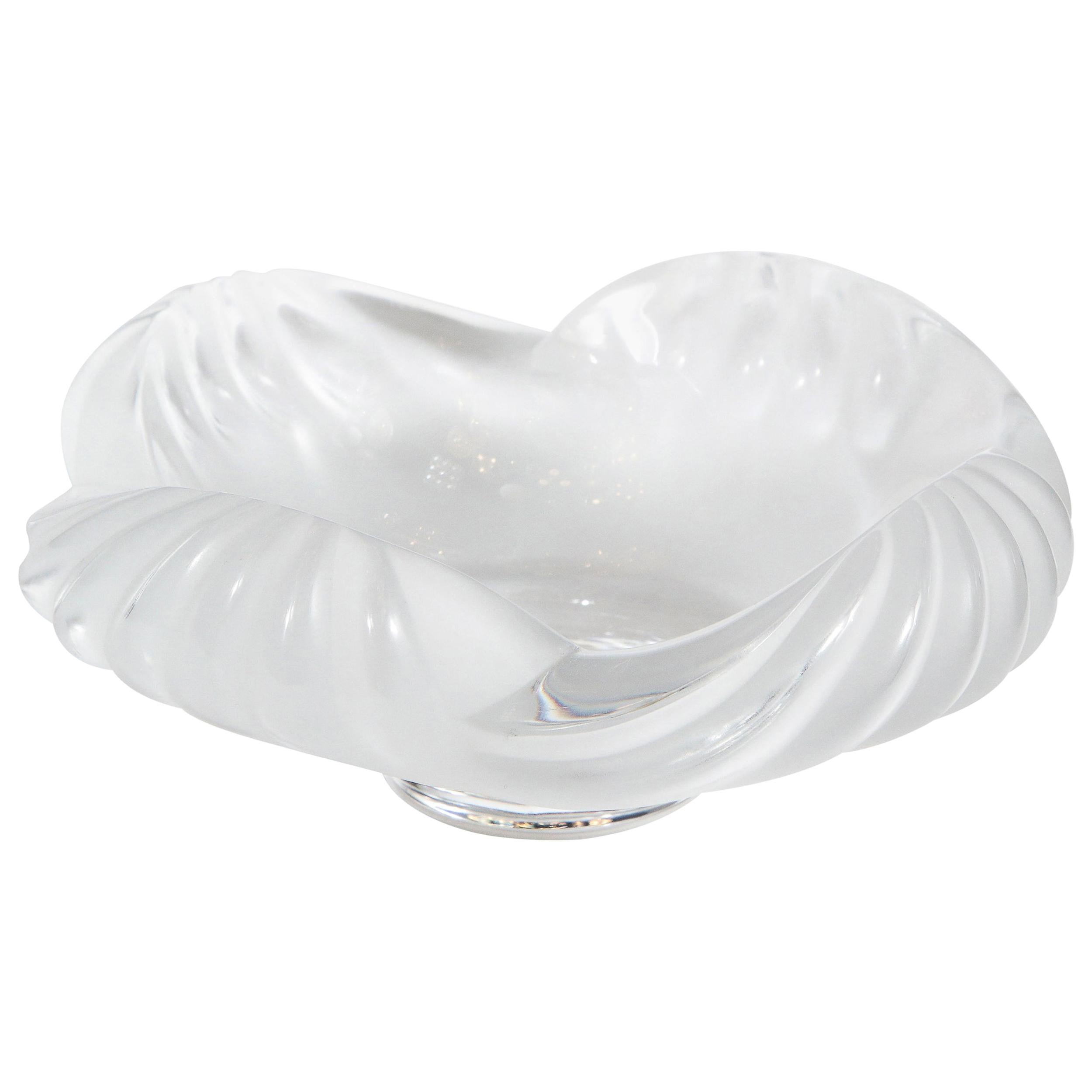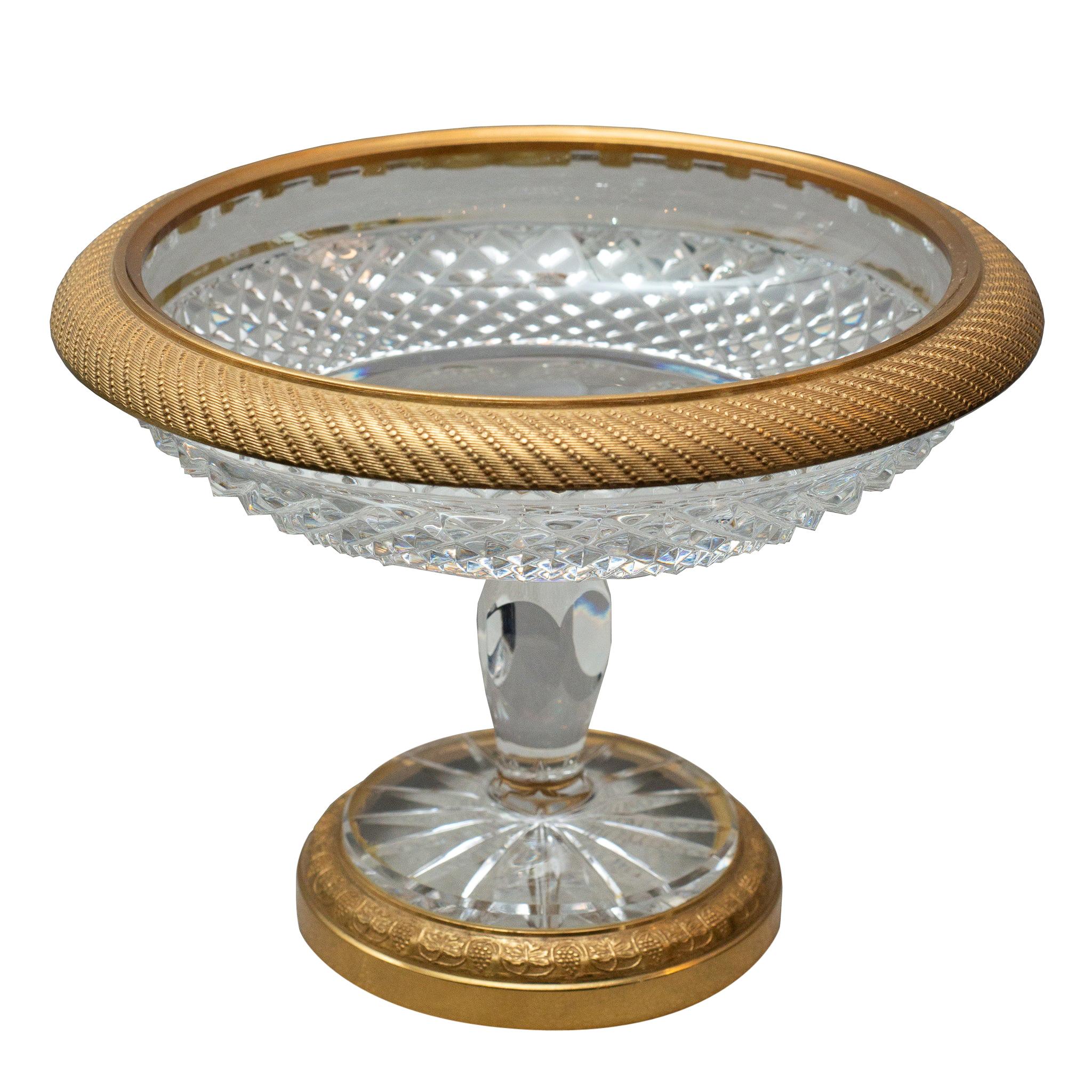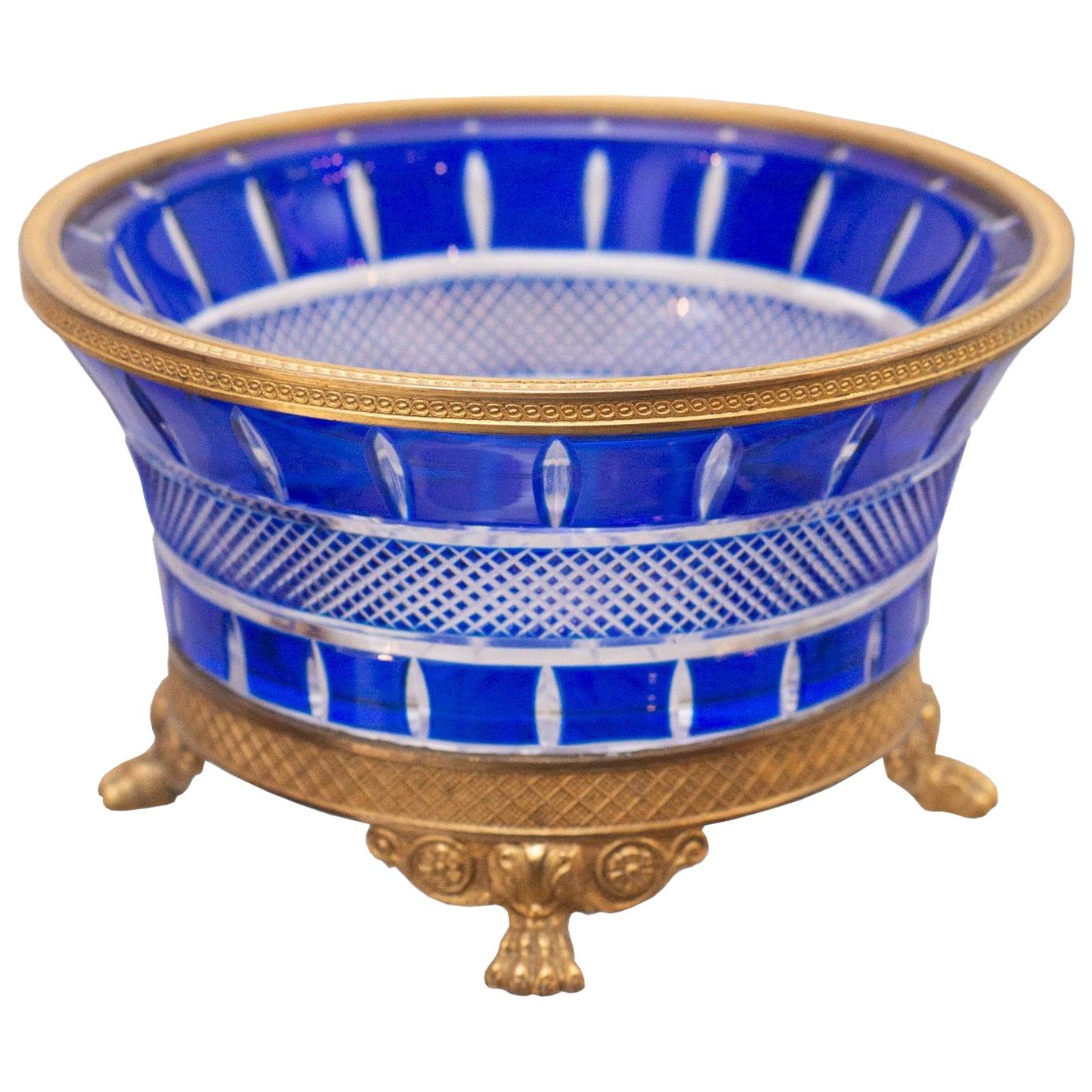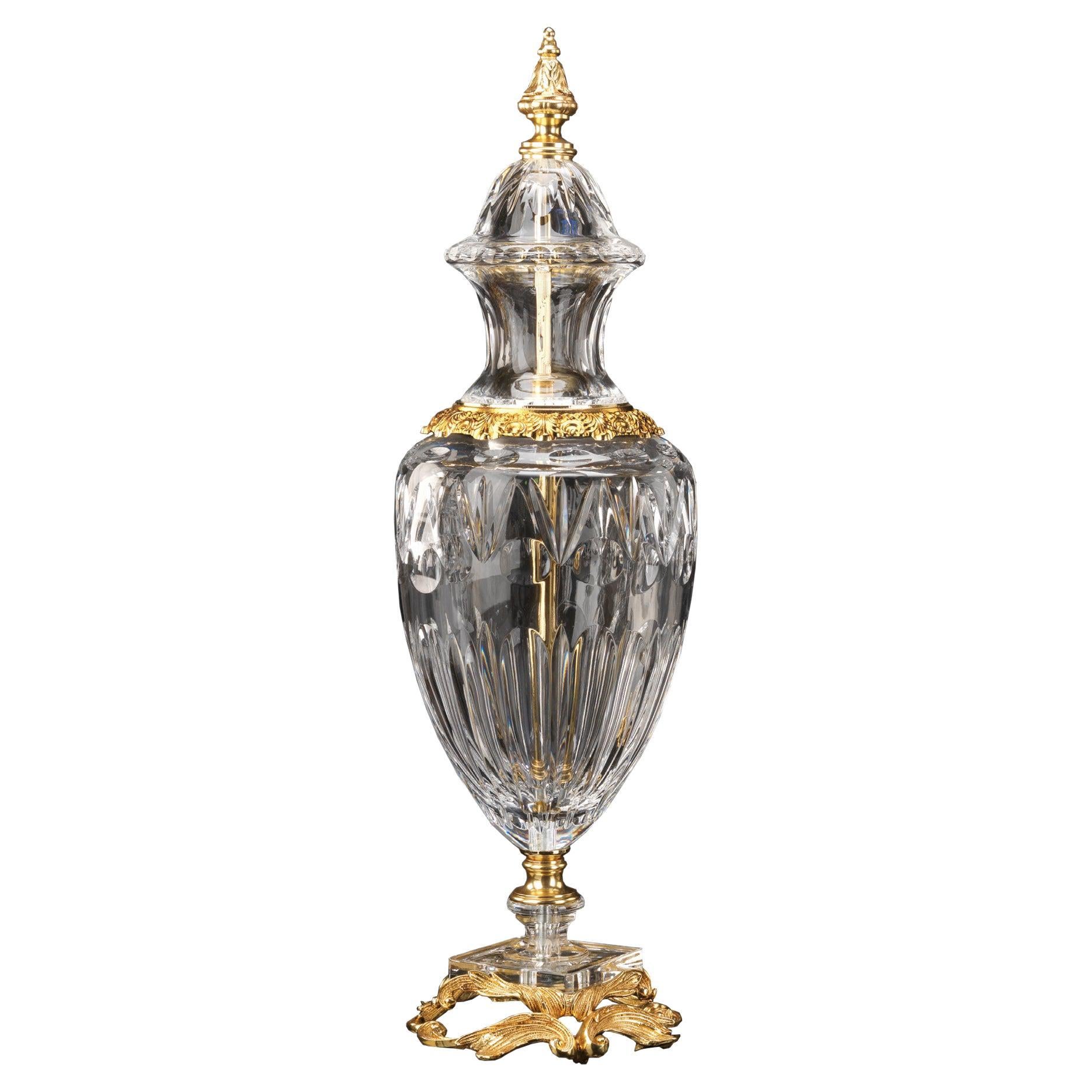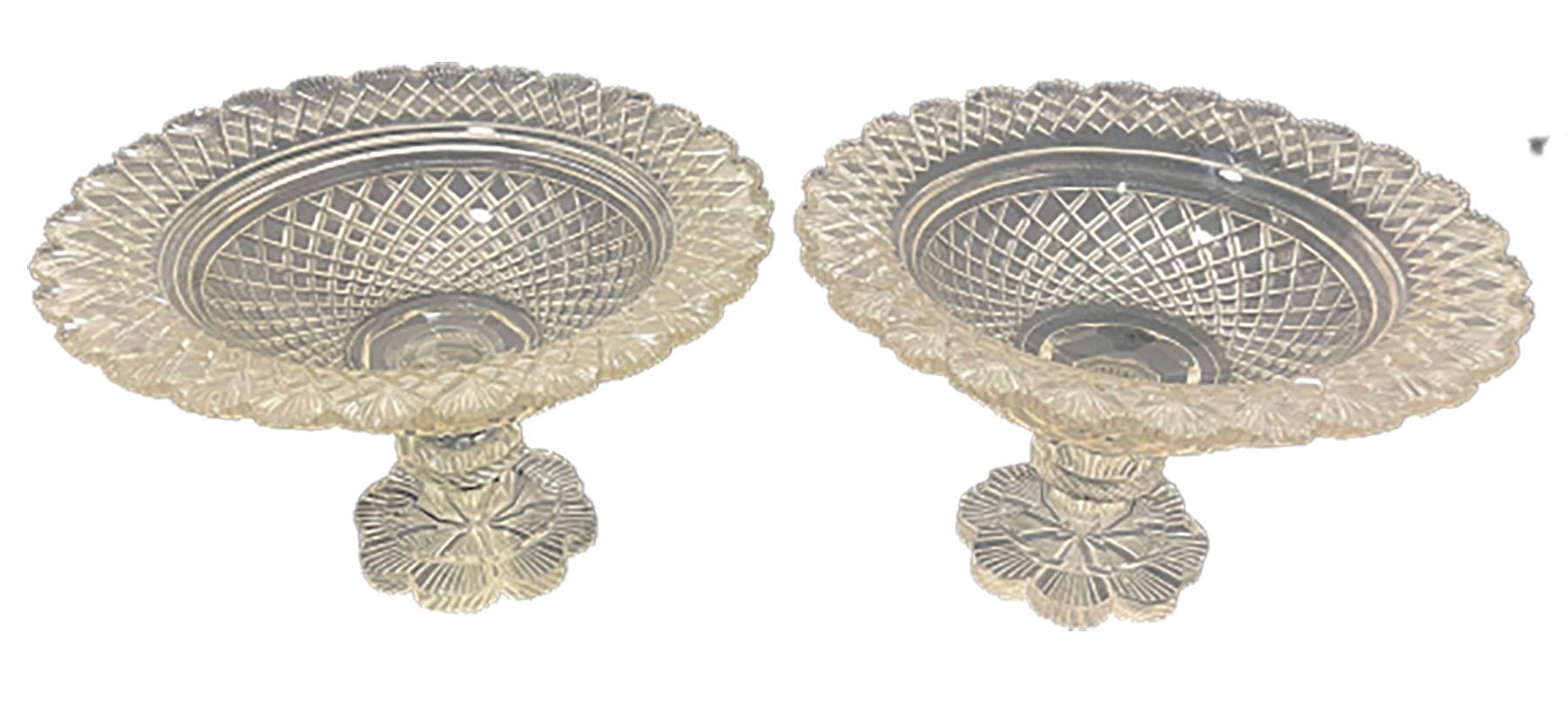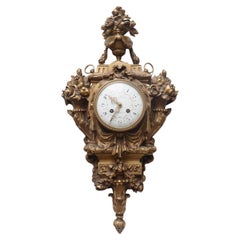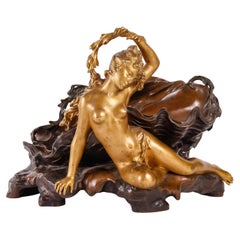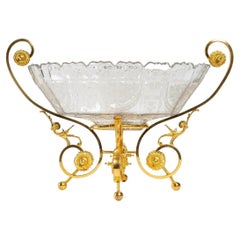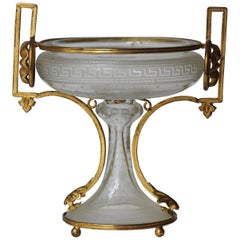
Neoclassical Engraved and Ormolu-Mounted Crystal Cup, circa 1870
View Similar Items
Want more images or videos?
Request additional images or videos from the seller
1 of 11
Neoclassical Engraved and Ormolu-Mounted Crystal Cup, circa 1870
About the Item
- Attributed to:Cristalleries De Baccarat (Maker)
- Dimensions:Height: 6.7 in (17 cm)Width: 6.3 in (16 cm)Depth: 5.52 in (14 cm)
- Style:Neoclassical Revival (Of the Period)
- Place of Origin:
- Period:
- Date of Manufacture:circa 1870
- Condition:
- Seller Location:Saint-Ouen, FR
- Reference Number:1stDibs: LU261237633353
About the Seller
4.9
Vetted Seller
These experienced sellers undergo a comprehensive evaluation by our team of in-house experts.
1stDibs seller since 2017
56 sales on 1stDibs
Typical response time: 1 hour
More From This SellerView All
- A French Napoléon III Ormolu Cartel Clock by Susse Frères Paris circa 1870By Susse FreresLocated in Saint-Ouen, FRA French 19th Century Cornucopia Gilt-Bronze Cartel, by Susse Frères Paris An Ormolu Cartel in the shape of an escutcheon, with a circular white enamel dial, signed Susse Frères/A Paris, Arabic numerals for the hours and for the minutes. It's bordered by a frieze of pearls and surmounted by a falling laurel knot with a drapery in the lower part and flanked by cornucopias adorned with flowers and fruits. Rectangular base decorated with a garland of knotted flowers dying in a tapered, fluted barrel and damping, in the upper part, a flowery Medici vase. Louis XVI Style Circa 1870 Original gilding uncleaned The Susse company, a worldwide reknown foundry, began to cast pieces as soon as the first half of the 19th Century. Awarded medals...Category
Antique 1860s French Louis XVI Wall Clocks
MaterialsOrmolu
$4,440 Sale Price30% Off - "The Little Mermaid" a Danish Modernist Art Deco Inlaid Bowl by Just AndersenBy Just AndersenLocated in Saint-Ouen, FRBeautiful inlaid bronze patinated bowl designed by Just Andersen (1884-1943) Inlaid scene of the little mermaid. Designed by Danish bronze artist Just Andersen (1884-1943), circa ...Category
Vintage 1930s Danish Art Deco Decorative Bowls
MaterialsBronze
$1,968 Sale Price23% Off - A French Art Nouveau Bronze Vide-Poches by Auguste Moreau (1834-1917)By Auguste MoreauLocated in Saint-Ouen, FRA French Art Nouveau bronze Vide-Poche Centerpiece Depicting a Naiad resting by a shell on a rock Signed Auguste Moreau on the rock Three patinas Circa 1900 Auguste Moreau (1834-1...Category
Antique 1890s French Art Nouveau Decorative Dishes and Vide-Poche
MaterialsBronze
$6,562 Sale Price20% Off - 19th Century French Pair of Belle Époque Baccarat Crystal Crinoline PlafonniersBy Cristalleries De BaccaratLocated in Saint-Ouen, FRPair of 19th Century Belle Époque Baccarat Crystal “Crinoline” Plafonniers Crinoline model created in 1895 Composed of a crown in gilded bronze f...Category
Antique 1850s French Napoleon III Chandeliers and Pendants
MaterialsCrystal, Ormolu
$7,820 Sale Price / set35% Off - Théodore Deck (1823-1891), Miniature Pair of Faience Vases circa 1870By Theodore DeckLocated in Saint-Ouen, FRTheodore Deck (1823-1891) A deep green enameled faience miniature pair of vases molded in the Chinese Archaistic Taste. Coves in the shape of elepha...Category
Antique 1870s French Chinoiserie Vases
MaterialsFaience
- Pair of Porcelain Vases Ormolu-Mounted in Lamps by Gagneau Paris XIXth CenturyBy Gagneau ParisLocated in Saint-Ouen, FRPair of large Japanese Porcelain Cone Shape Vases with Imari decoration Important mounts in ormolu and gilded metal, the base decorated with a laurel wreath, the upper part of falling leaves and a frieze of knotted ribbon. The mounts signed Gagneau, 115 R. Lafayette. Circa 1860 With their original aluminium bulb cover and original gilding Vase it self Height 47 cm The Gagneau Company is one of the most famous lighting factories in Paris in the nine-teenth century, established in 1800 at 25 rue d'Enghien in Paris and later at 115 rue de Lafayette. She has participated in many exhibitions throughout this century. She began in 1819 with the Exposition des Produits de l'Industrie and later participated in the Universal Exhibitions where she was part of the jury in the category of art bronzes (class 25) at the Universal Exhibition in Paris in 1889. "Imari" was simply the trans-shipment port for Arita wares, from where they went to the for-eign trading outposts at Nagasaki. It was the kilns at Arita which formed the heart of the Japanese porcelain industry. Arita's kilns were set up in the 17th century, after kaolin was discovered in 1616. A popular legend attributes the discovery to an immigrant Korean potter, Yi Sam-Pyeong (1579–1655), although most historians consider this doubtful. After the discovery, some kilns began to produce revised Korean-style blue and white porcelains, known as Early Imari, or "Shoki-Imari". In the mid-17th century, there were also many Chinese refugees in northern Kyushu due to the turmoil in China, and it is said that one of them brought the overglaze enamel coloring technique to Arita. Thus Shoki-Imari developed into Ko-Kutani, Imari, and later Kakiemon, which are sometimes taken as a wider group of Imari wares. Ko-Kutani was produced around 1650 for both export and domestic market.Kutani Ware is characterized by vivid green, blue, purple, yellow and red colors in bold designs of landscapes and nature. Blue and white porcelain pieces continued to be produced and they are called Ai-Kutani. Ko-Kutani Imari for the export market usually adopted Chinese design structure such as kraak style, whereas Ai-Kutani for the domestic market were highly unique in design and are ac-cordingly valued very much among collectors. Ko-Kutani style evolved into Kakiemon-style Imari, which was produced for about 50 years around 1700. Kakiemon was characterized by crisp lines, and bright blue, red and green designs of dramatically stylized floral and bird scenes. Imari achieved its technical and aes-thetic peak in the Kakiemon style, and it dominated the European market. Blue and white Kakiemon is called Ai-Kakiemon. The Kakiemon style transformed into Kinrande in the 18th century, using underglaze blue and overglaze red and gold enamels, and later additional colors. Imari began to be exported to Europe when the Chinese kilns at Jingdezhen were damaged in the political chaos and the new Qing dynasty government halted trade in 1656–1684. Ex-ports to Europe were made through the Dutch East India Company, and in Europe the des-ignation "Imari porcelain" connotes Arita wares of mostly Kinrande Imari. Export of Imari to Europe stopped in mid-18th century when China resumed export to Eu-rope, since Imari was not able to compete against Chinese products due to high labor costs. By that time, however, both Imari and Kakiemon styles were already so popular among Eu-ropeans that the Chinese export porcelain copied both, a type known as Chinese Imari. At the same time, European kilns, such as Meissen and English potteries such as Johnson Bros. and (Royal) Crown Derby, also imitated the Imari and Kakiemon styles. Export of Imari surged again in late 19th century (Meiji era) when Japonism flourished in Europe.Thus, in the western world today, two kinds of true Japanese Imari can...Category
Antique 1880s French Japonisme Table Lamps
MaterialsBronze
$8,422 Sale Price / set30% Off
You May Also Like
- Engraved Crystal Cup, Gilt Bronze MountingLocated in Saint-Ouen, FR"Engraved crystal cup, Gilt Bronze Mounting". Beautiful cut and engraved crystal cup, gilt bronze mount, 19th century, Napoleon III period.Category
Antique 19th Century French Napoleon III Decorative Bowls
MaterialsCrystal, Bronze
- 19th Century Ruby Red Bohemian Crystal Cup with Enameled DecorationLocated in Paris, FRRuby red, Bohemian crystal cup with a large, petal-shaped rim. It is decorated with enameled rinceau that is highlighted with gilded, flowering branches. The rim, stem and foot have ...Category
Antique 19th Century Czech Louis Philippe Crystal Serveware
MaterialsCrystal
- Fine Pair of English Silvered Bronze Glass Crystal Ormolu Bowls Bamboo CompotesLocated in Roslyn, NYFine pair of English silvered bronze ormolu in bamboo and leaf form, set with glass / crystal shell form bowls / compotes.Category
20th Century English Belle Époque Decorative Bowls
MaterialsCrystal, Silver Plate, Bronze
- English Cut Crystal Bowl with Scalloped Top and Diamond Motifs, circa 1900Located in Atlanta, GATwo English turn of the century cut crystal bowls from the early 20th century, priced and sold individually. Born in the early years of the 20th century at the beginning of the reign...Category
Early 20th Century English Crystal Serveware
MaterialsCrystal
- Modernist Translucent and Frosted Channeled Crystal Bowl Signed LaliqueBy LaliqueLocated in New York, NYThis elegant modernist bowl was realized in France by Lalique- one of France's finest luxury glass and jewelry houses since 1888. It features a scalloped perimeter with channeled sid...Category
20th Century French Modern Decorative Bowls
MaterialsCrystal
- Antique French Cut Crystal and Bronze Tazza / Compote / DishLocated in Toronto, ONA stunning and beautifully made antique French cut crystal and bronze tazza, made circa 1900. Bronze trims are in excellent condition for their age and the elaborate hand cut crystal...Category
Early 20th Century French Decorative Bowls
MaterialsCrystal, Bronze

